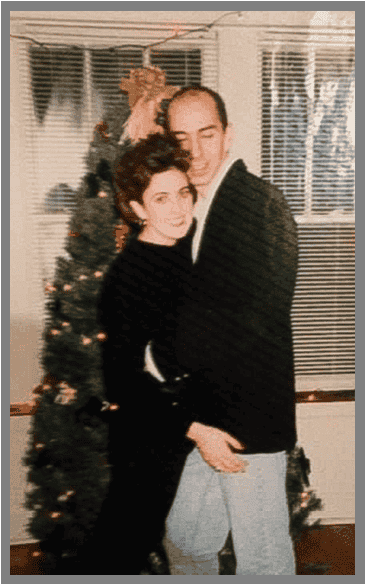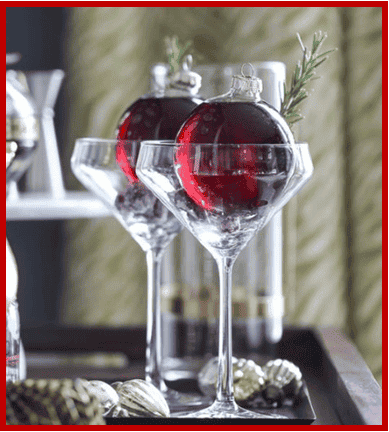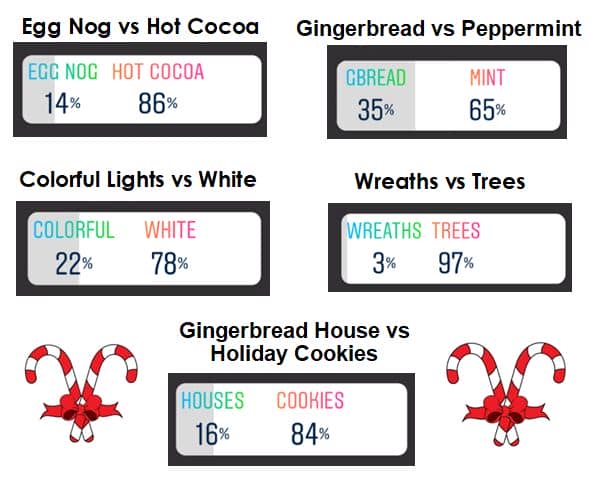Wife Talk

What do the holidays mean to you?
By Patrice Ghaderi
“Can you write about what the holidays mean to you? Oh, and I need it tonight?” That was my introduction to the Newsletter takeover that we have going on here this month. The word that first came to mind was “work,” the holidays mean work! If you are reading this, you may be like me, and you feel the crunch of placing an insurmountable number of events and tasks between Thanksgiving and the end of the year. You are probably the shopper, the wrapper, the decorator, the baker, the list-maker, the event planner, and the organizer. Somehow every year, it all gets done, and we arrive on Christmas morning having made it through a packed calendar, late-night wrapping sessions, and surviving the elves-let us not forget about the elves! So after that marathon, what does it all mean to me? It means traditions and memories.
I read a study once about memory and what causes us to remember some events better than others. It also focused on early memories and why some childhood memories stand out to us. They concluded that feelings/emotions and memories go hand in hand. When a feeling is attached to an event, it makes that event more memorable. Think back on events you remember from childhood. The ones you remember most vividly likely have an emotion tied to them. When I think of Christmas when I was young, I remember feeling excited! The gifts were not big-ticket items; they didn’t need to be. It was the one time of year there was something new just for me! I don’t know about you, but I did not grow up in a time when walking into a store like Target and coming out with something new was a thing. The rare exception was the pack of Fruit Stripe gum at the grocery store. So, my earliest memories of the holidays are memories of being dazzled and surprised.
As an adult with children, the holidays mean being intentional about the memories and traditions we are creating: memories and traditions for both myself and our family to enjoy. If feelings and memories go together, it matters to me that they have the memory of togetherness, the feeling of being connected, sharing a day, being cozy in Christmas pajamas. I hope they have the memories of a house that was festive and celebratory. We have also created traditions, some intentional, some unintentional, and some we have adapted in the process. For example, long before Elf on the Shelf exploded in popularity, Santa had another style of elf available from a local helper. I thought it would be cute to try one year. It was indeed super cute, but it lasted 10 (l-o-n-g) years-an unintentional tradition. I tried desperately to hang on to the tradition of cutting down a Christmas tree. The reality is I don’t like being out in the cold, watering a tree, or cleaning up needles. So, I traded in the memory of that fresh pine smell for a fake tree and a scented candle-adapted tradition. I don’t remember when exactly this started, but my husband has taken over the yearly ornaments for the kids for many years now. They match whatever they are into that year unless, hypothetically speaking, they aren’t ordered in time, then maybe it might be homemade (think kindergarten popsicle sticks and pipe cleaner style…hypothetically)-intentional tradition.
I stand by my initial knee jerk reaction that the holidays mean work. However, I know it isn’t the work that our kids see or will remember. The work is just a conduit to obtaining the memories and obtaining the traditions. Those are the things that bring out the meaning of the holidays. Those are the things that allow us to reflect fondly and create a recipe for magic that brings us back year after year, ready to do it all again. This year may challenge some of our traditions, and it will be a different kind of memory. Nonetheless, may your holidays be filled with those things that bring your heart joy and peace!
Ornament-tini

Get in touch with your festive self and get creative with your drink of choice. All you need are martini glasses, clear ornaments, & garnish. The drink doesn’t have to be alcoholic. You could substitute with cranberry juice or a spiced holiday drink. Garnish with sprigs of rosemary and fresh cranberries.
Going Flat
Even though most women choose to have reconstruction, others may decide not to do so. They may elect not to have reconstruction following mastectomy and not wear a breast form (prosthetic breast). Some patients choose to have their implants removed after having reconstruction as well. The term most commonly used is “going flat” or “living flat.”
A 2014 study found that about 44% of women didn’t have reconstruction. There are several reasons why a woman may choose to go flat, including:
- health issues that make the one or more surgeries involved in reconstruction too risky
- the need to return to daily activities quickly
- concerns about losing muscle strength or surgery at another site on their body with autologous (or flap) reconstruction
- not wanting a foreign body placed with implant-based reconstruction
- concerns about the cost if there is no insurance coverage
To reconstruct or not is a very personal decision. There is no right way, just what is best for you and your healing.
Some women say they’ve felt pressured by their doctors or family members to have reconstruction. If you’re having trouble explaining your decision to your spouse or other family members, a therapist, counselor, or social worker can be an invaluable resource to navigate difficult conversations.
Recovering from a mastectomy with no immediate reconstruction is generally easier than recovering from a mastectomy with reconstruction. If you change your mind later, you can have delayed reconstruction – reconstruction 6 or 12 months or more after mastectomy.
The decision not to undergo reconstruction may lead to uncertainty in your relationship. You may be wondering about intimacy after mastectomy with no reconstruction. You may be worried that the loss of your nipple sensation and feeling in the breast area may change your sex life for the worse. You might fear that your partner doesn’t find you attractive with only one or no breasts (if you’ve had a double mastectomy).
Studies show, however, that partners of breast cancer patients care only that their loved one is alive and feeling well. Caring partners (both men and women) see their partners as having many parts to love and more than the sum of those parts.
If you have considered “going flat,” discuss this with your surgeon as a viable option in your cancer care. Discuss an aesthetic flat closure so your chest can have a smooth appearance. As always, please call or email me with any questions.
https://www.breastcancer.org/treatment/surgery/reconstruction/no-reconstruction

Socially Distanced Holiday Activities
The holidays are a time of year that many traditions unfold. It is filled with warmth, happiness, and celebration. We have found a list of activities to help you enjoy the holiday spirit, but still maintain healthy guidelines that we have adapted this year.
Build a Gingerbread House
Get in touch with your inner Joanna Gaines & decorate the gingerbread house of your dreams!
Bake Holiday Cookies
It doesn’t have to be just cookies. Look up a popular holiday recipe that you have never tried before!
Drive to See Holiday Lights
Load up your car, bring some snacks, & visit the holiday lights while playing holiday music.
Mail Holiday Cards
If you haven’t already, you can design a card that fits you and/or your family’s personality. Spread some holiday cheer to others!

Festive Opinions

You probably already knew that the idea of Santa Claus came from St. Nicholas, but the real saint wasn’t a bearded man who wore a red suit. That all came much later. According to legend, the fourth-century Christian bishop gave away his abundant inheritance to help the needy and rescued women from servitude. His name was Sinter Klaas in Dutch, which later morphed into Santa Claus.
The Man in Red
You probably already knew that the idea of Santa Claus came from St. Nicholas, but the real saint wasn’t a bearded man who wore a red suit. That all came much later. According to legend, the fourth-century Christian bishop gave away his abundant inheritance to help the needy and rescued women from servitude. His name was Sinter Klaas in Dutch, which later morphed into Santa Claus.



